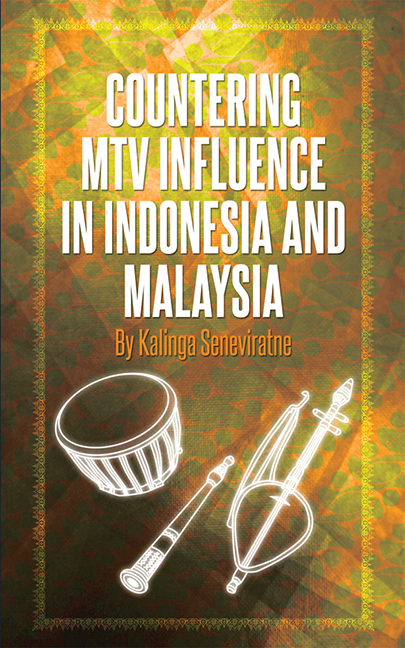Book contents
- Frontmatter
- Contents
- Preface
- 1 Introduction
- 2 Malay Cultural Landscape and Identity: Malaysia and Indonesia
- 3 Music, Islam, and Modern Cultural Identities
- 4 Pop Music, Cultural Imperialism, and Localization
- 5 Case Studies
- 6 Countering Cultural Imperialism: Theoretical Analysis
- References
- Index
- About the Author
4 - Pop Music, Cultural Imperialism, and Localization
Published online by Cambridge University Press: 21 October 2015
- Frontmatter
- Contents
- Preface
- 1 Introduction
- 2 Malay Cultural Landscape and Identity: Malaysia and Indonesia
- 3 Music, Islam, and Modern Cultural Identities
- 4 Pop Music, Cultural Imperialism, and Localization
- 5 Case Studies
- 6 Countering Cultural Imperialism: Theoretical Analysis
- References
- Index
- About the Author
Summary
In the previous chapter I examined and discussed how nasyid music, with its Islamic flavour, has become both a religious movement as well as part of Malaysia's pop music industry. In this chapter, which includes discussion of the results of observations, contents analysis, focus group discussion, and personal interviews, I explore other more secular Malaysian and Indonesian genres of pop music, and examine how they are responding to the globalized music industry, which is now very much part of the pop music industry in the region. I will also discuss how local musical identities have developed as a result, especially with regard to dangdut music, in the context of the theoretical perspectives examined in Chapter 1.
Pop Music Industry in the Age of Globalization
To the outsider Malaysia and Indonesia appear to share a common Malay or Melayu cultural heritage. Yet within this seemingly uniform culture there is a diversity of regional and ethnic cultural expressions and musical forms, which continue to interact with each other as well as with the globalized musical culture coming from the West and other areas such as India and the Arab world. There is an attempt to provide some form of fusion of musical culture with which the nation can identify. Over the past four decades the governments of both of these countries have been trying to guide or develop just such a contemporary cultural expression, with Malaysia seemingly more successful than its larger neighbour Indonesia.
In the case of Malaysia, for the purposes of this study, the focus will be on the musical culture of the dominant Malay community. As I suggest in Chapter 1, the history of Malay pop music goes back to the early twentieth century when in the 1920s and 1930s bangsawan troupes developed a form of popular Malay music from traditional asli (pure) music. It was performed live in bangsawan theatres, amusement parks, and in dance halls in urban centres.
- Type
- Chapter
- Information
- Countering MTV Influence in Indonesia and Malaysia , pp. 134 - 189Publisher: ISEAS–Yusof Ishak InstitutePrint publication year: 2012

